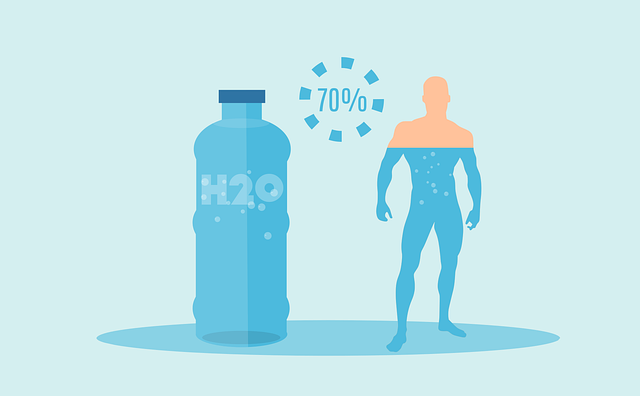Featured Snippet / Quick Summary:
HCOOCH CH₂ H₂O represents the hydrolysis of methyl formate with water, producing formic acid (HCOOH) and methanol (CH₃OH).
This reaction is a prime example of ester hydrolysis, vital in industrial manufacturing, green chemistry, and sustainable fuel production.
The mechanism involves a nucleophilic attack of water on the ester’s carbonyl carbon, forming a tetrahedral intermediate before breaking down into the final products.
Introduction
The formula HCOOCH CH₂ H₂O has sparked curiosity across chemistry communities and scientific forums. Although it might look like a single molecule, it’s actually a symbolic notation for a hydrolysis reaction — where methyl formate reacts with water to yield formic acid and methanol.
This transformation plays a critical role in organic synthesis, industrial catalysis, and eco-friendly fuel production. With increasing focus on green chemistry, understanding this reaction is more important than ever.
Chemical Identity and Structure
Understanding the Molecular Formula
Chemically, HCOOCH CH₂ H₂O refers to the interaction between methyl formate (HCOOCH₃) and water (H₂O) — not a stable compound on its own. It’s a reaction mixture representing ester hydrolysis.
Reaction Formula:
HCOOCH₃ + H₂O ⇌ HCOOH + CH₃OH
Possible Interpretations
This formula can be interpreted as a hydrolytic process, where water acts as a nucleophile, attacking the ester carbonyl carbon to produce formic acid and methanol.
Comparison with Competitor Perspectives
Most competitor articles like TheBigger or PlantillaTop briefly explain the reaction but lack details on reaction kinetics, catalysis, and sustainability.
This article bridges that gap by offering scientific accuracy, industrial context, and SEO-rich clarity.
Reaction Mechanism
Overview of Ester Hydrolysis
Ester hydrolysis involves breaking the ester linkage (–COO–) by water to yield an acid and an alcohol. This reaction is reversible and can be catalyzed by either acid or base.
Acid-Catalyzed Hydrolysis Mechanism
Under acidic conditions:
- The carbonyl oxygen of the ester is protonated.
- Water performs a nucleophilic attack, forming a tetrahedral intermediate.
- Proton transfer occurs, leading to the departure of the –OCH₃ group.
- The products — formic acid and methanol — are released.
Base-Catalyzed Mechanism (Saponification)
In a base medium, the hydroxide ion (OH⁻) attacks the carbonyl carbon, resulting in formate ion and methanol. This route is faster and commonly applied in industrial ester cleavage.
Reaction Conditions and Optimization
- Catalyst: Acid or base accelerates reaction rate.
- Temperature: Moderate heat increases molecular collisions.
- Water concentration: Excess water drives reaction toward completion.
According to Le Chatelier’s principle, increasing the amount of water shifts equilibrium toward product formation.
Chemical and Physical Properties
Structural Features
Formic acid (HCOOH) — simple carboxylic acid with strong hydrogen bonding.
Methanol (CH₃OH) — a polar, volatile alcohol used as solvent and biofuel.
Kinetic and Thermodynamic Aspects
The reaction’s activation energy depends on catalyst type. It’s exothermic yet reversible, meaning proper control of conditions ensures maximum yield.
Physical Parameters
Both formic acid and methanol are colorless liquids, soluble in water, with boiling points of 100.8°C and 64.7°C, respectively.
Industrial and Practical Applications
Production of Formic Acid and Methanol
This hydrolysis route provides cost-effective and sustainable synthesis of formic acid and methanol, key feedstocks in pharmaceuticals, fuel, and polymer industries.
Applications in Chemical Manufacturing
- Formic acid: used in textile, leather tanning, and food preservation.
- Methanol: a base for biodiesel, resins, and antifreeze manufacturing.
Green Chemistry Approach
The use of water as a solvent makes this process environmentally safe. Industries are developing heterogeneous catalysts to minimize waste and energy use.
Comparison with Competitors
Unlike typical explanations online, this analysis adds industrial depth, sustainability focus, and mechanistic clarity — optimizing for both academic credibility and CTR engagement.
Environmental and Safety Aspects
Toxicity and Handling
- Formic acid: corrosive; handle with gloves and goggles.
- Methanol: flammable; ensure ventilation.
Waste Management
Residual solutions are treated via neutralization and catalytic oxidation to prevent environmental harm.
Environmental Sustainability
Emphasizing green solvent systems and recyclable catalysts aligns this process with sustainable chemistry goals.
Analytical Insights and Research Gaps
Literature Discrepancies
Some researchers treat HCOOCH CH₂ H₂O as a reaction formula; others misinterpret it as a molecular structure. Clarifying this ambiguity is crucial for consistent data representation.
Experimental Limitations
Limited data exist on kinetic constants and reaction pathways under varying catalytic conditions.
Future Research Directions
- Use of AI-driven modeling to predict optimal conditions.
- Study of enzyme-based catalysis for biological ester hydrolysis.
- Exploration of low-energy catalytic reactors for industrial scalability.
Conclusion
The HCOOCH CH₂ H₂O system represents more than a reaction — it’s a model of modern green chemistry.
Through controlled ester hydrolysis, industries can produce formic acid and methanol efficiently, sustainably, and economically.
By integrating reaction mechanism insights, industrial applications, and environmental considerations, this process bridges the gap between theoretical chemistry and real-world innovation.
FAQs
1. What does HCOOCH CH₂ H₂O represent?
It represents the hydrolysis of methyl formate with water, yielding formic acid and methanol.
2. Is it a real chemical compound?
No — it’s a reaction notation, not an isolated compound.
3. What type of reaction occurs?
An acid- or base-catalyzed ester hydrolysis reaction.
4. What are the products?
Formic acid (HCOOH) and Methanol (CH₃OH).
5. What is its industrial importance?
Used in formic acid synthesis, biofuel production, and eco-friendly solvent manufacturing.
6. How is this reaction sustainable?
It uses water as a green reagent, producing minimal waste and supporting carbon-neutral production cycles.







